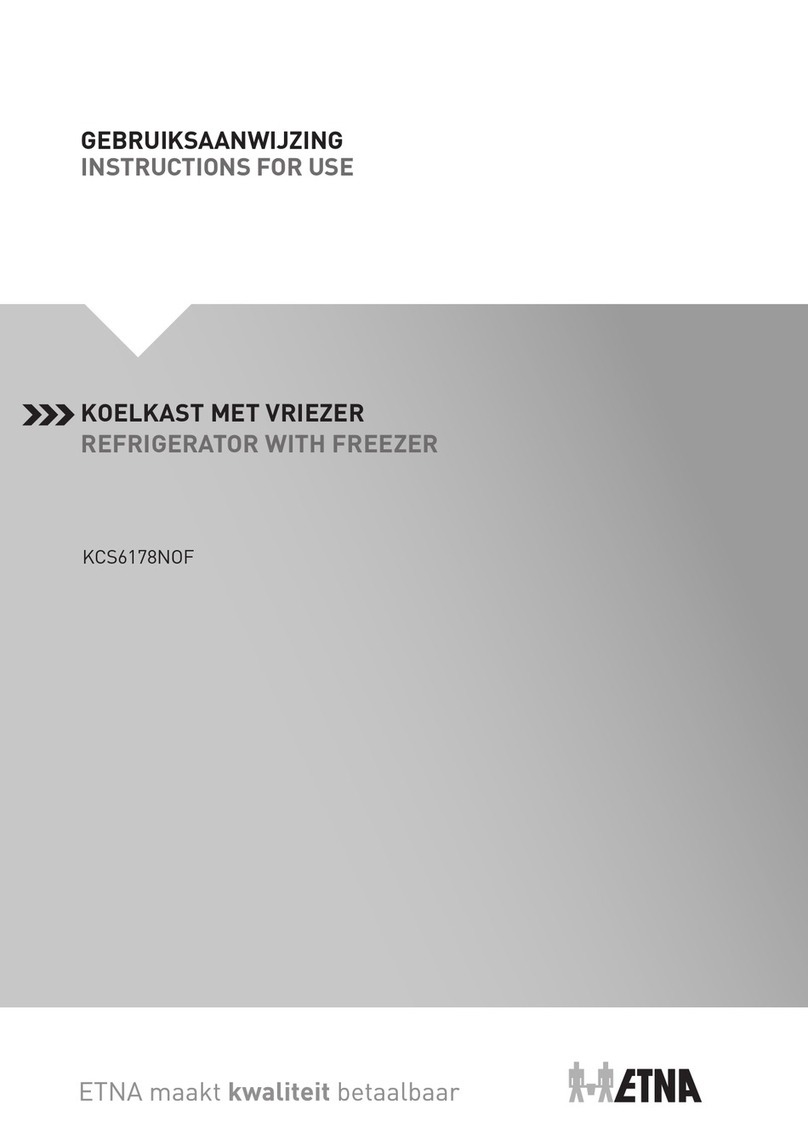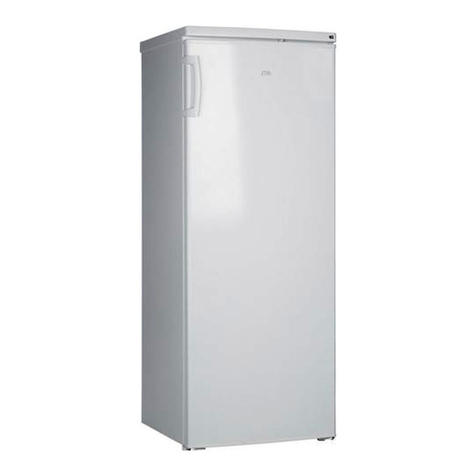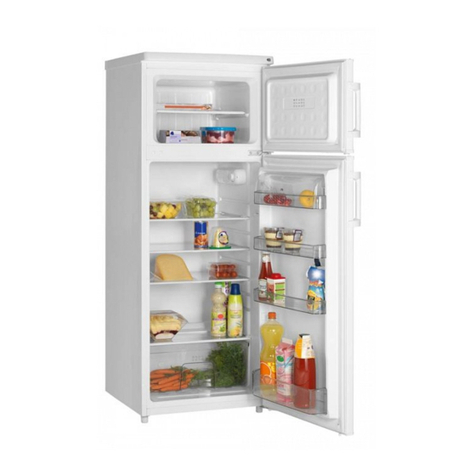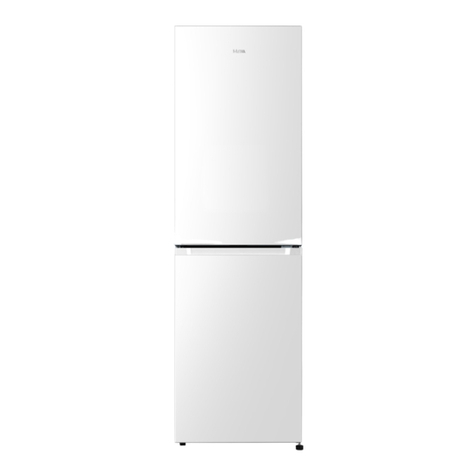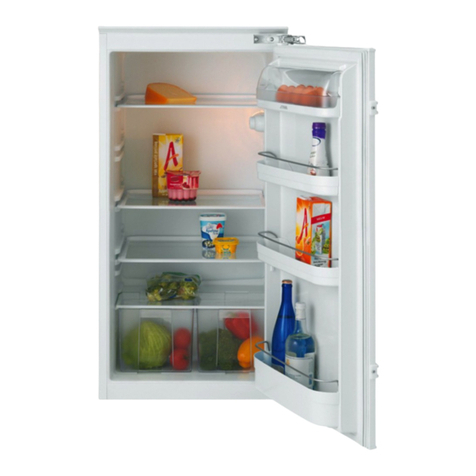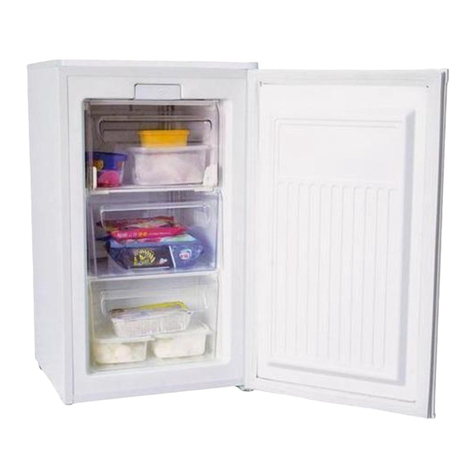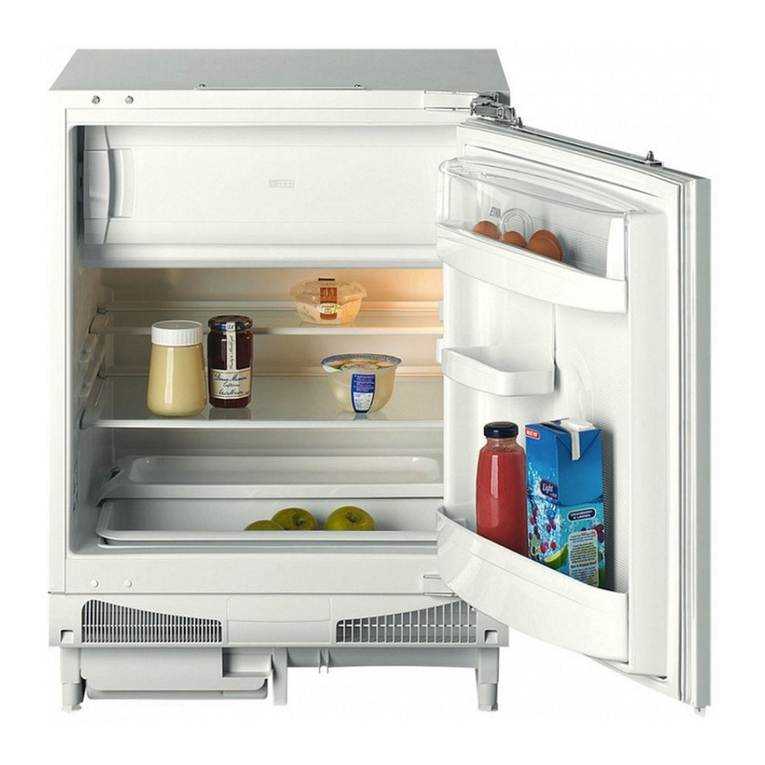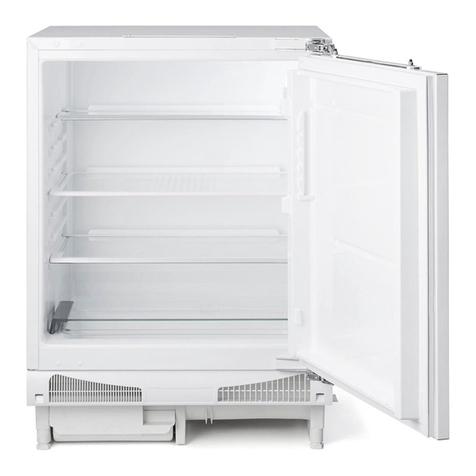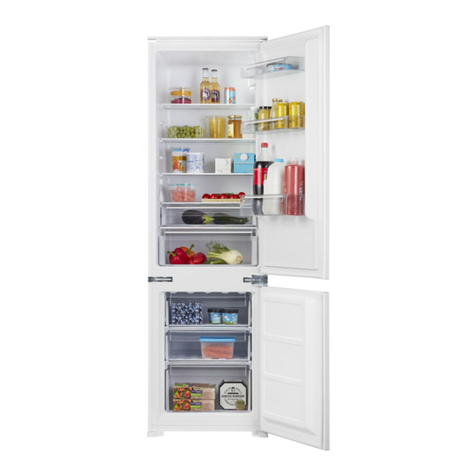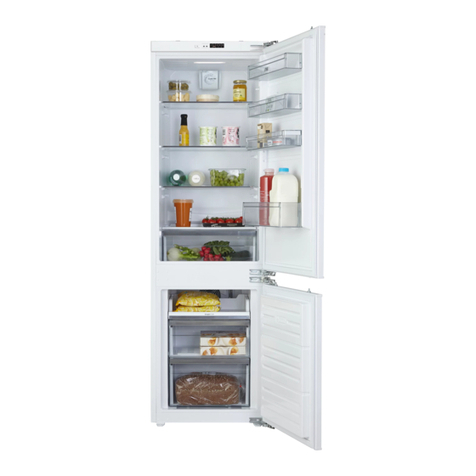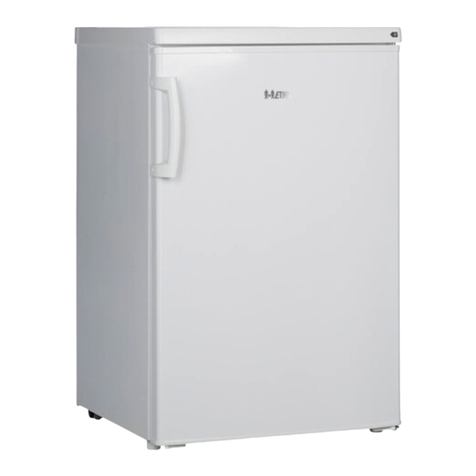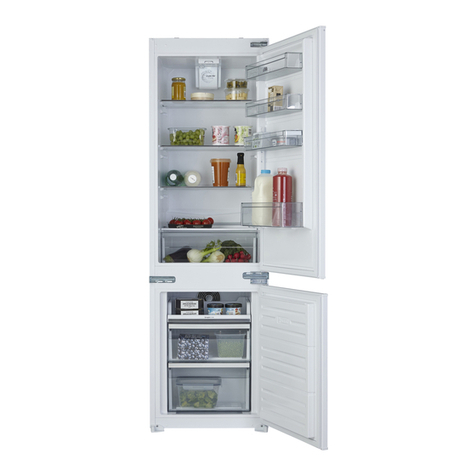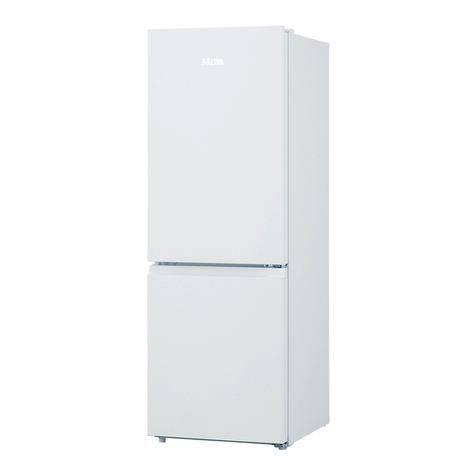
444334
Before fi rst operation
• This appliance can be used by children aged from 8 years and above and persons with reduced
physical, sensory or metal capabilities or lack of experience and knowledge if they have been
given supervision or instruction concerning use of the appliance in a safe way and understand
the hazards involved. Children shall not play with the appliance. Cleaning and user maintenance
shall not be made by children without supervision.
• Before connecting the appliance read these instructions carefully. They describe the appliance
and provide instructions for its safe and correct use. The instructions are prepared for different
types and models of the appliance so they may contain descriptions of functions and compo-
nents your appliance may not have.
• These instructions also contain the NO FROST version of the freezer, fi tted with the fan and
featuring automatic defrosting.
• Remove the wrapping protecting the appliance during transport.
• Wrappings contain environmentally friendly materials which can be recycled, recovered or dispo-
sed off without threat to the environment.
• On the door corners (on freestanding appliances) or on the housing of the appliances (on built-in
appliances) the spacers are installed, which should be removed and replaced with the attached
spacer-plugs.
• Before connecting the appliance to the mains supply, leave it in upright position for about 2 ho-
urs. This will reduce possibility of malfunctions in the cooling system resulting from prior transport
and handling.
• The appliance must be connected to the mains supply in accordance with the standing regulati-
ons and local requirements.
• The appliance must not be used in open air or exposed to weather precipitation.
• Always disconnect the appliance from power supply (pull the power cord from wall socket) before
cleaning and before replacing the light bulb.
• If the power supply cord is damaged, in order to avoid hazard it must be replaced by the service
or by qualifi ed personnel.
• In case of longer disuse fi rst turn the appliance off with the ON/OFF button and disconnect it
from mains supply. Empty the appliance, clean the interior and leave the door ajar.
• For the protection of environment deliver the obsolete appliance to the authorized scrap applian-
ce dealers.
• Never let the children play with the appliance.
• Self closing shear door hinge pulls the door to the cabinet just before closing, thereby preventing
the door to remain ajar. Equally it limits the door opening angle and prevents damage to adjacent
elements.
• Rating plate with basic information is located in the interior of the appliance. If the sticker plate is
not suitable for your language, replace it with the attached one.
• Warning: Ventilation slots on the appliance or built-in ele-
ment should always be kept clean and unobstructed.
• Warning: Do not use any mechanical accessories
when thawing the refrigerator, except for those explici-
tly recommended by the manufacturer.
3


